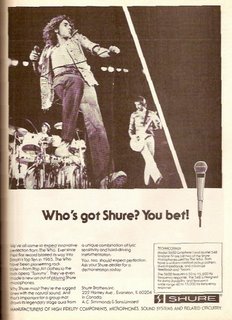
Now here's a real classic - the November 1977 issue of GUITAR PLAYER, featuring a cover story interview with KEITH RICHARD (no "s") by SCOTT E. KUTINA.

In the 1970s, serious interviews with Keith were pretty rare.
Here Keith talks about all sorts of music-related stuff - guitars, amps, strings, open tunings, songs, his musical interaction with the other band members - absolutely fascinating.
Here are some excerpts:
"I started to use open tunings on Beggars Banquet. During that long recording lay-off after Between The Buttons, I got rather bored with what I was playing on guitar - maybe because we weren't working, and it was part of that frustration of stopping after all those years, and suddenly having nothing to do. So my playing sort of stopped, along with me. Then I started looking into some Twenties and Thirties blues records. Slowly I began to realize that a lot of them were in very strange tunings. These guys would pick up a guitar, and a lot of times it would be tuned a certain way, and that's how they'd learn to play it. It might be some amazing sort of a mode, some strange thing. And that's why for years you could have been trying to figure out how some guy does this lick, and then you realize that he has this one string that is supposed to be up high, and he has it tuned down an octave lower. Anyway I eventually got into open-D tuning [D, A, D, F#, A, D, low to high], which I used on Beggars Banquet. "Street Fighting Man" is all that, and "Jumpin' Jack Flash". "Child of the Moon" was one of the early open tuning numbers on the electric guitars, because "Street Fighting Man" was all acoustic guitars. There's no electric guitar parts at all."
Even that high end lead part?
"That was a cassette player with no limiter. Just distortion. Just two acoustics, played right into the mike, and hit very hard. There's a sitar in the back, too. That would give the effect of the high notes on the guitar. And Charlie was playing his little 1930s drummer's practice kit. It was all sort of built into a little attache case, so some drummer who was going to his gig on the train could sort of open it up - with two little things about the size of small tambourines without the bells on them, and the skin was stretched over that. And he'd set up this little cymbal, and this little hi-hat would unfold. Charlie sat right in front of the microphone with it. I mean, this drum sounds massive. When you're recording, the size of things has got nothing to do with it. Its how you record them. Everything there was totally acoustic. The only electric instrument on there is the bass guitar, which I overdubbed afterwards."
An excellent interview, it just goes on and on like that.
There's also an article on MISSISSIPPI FRED MCDOWELL, with some sheet music for a couple of his songs, including "You Got To Move".

And there are articles on PHIL LESH, JOHN SEBASTIAN, and "THE WHO'S SOUND SYSTEM: How it grew from 200 to 75,000 watts".
Click images to enlarge.
No comments:
Post a Comment